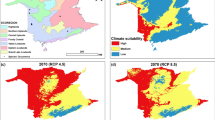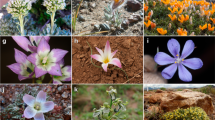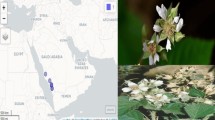Abstract
Our aim is to model rare species (with few occurrences) but modelling the distribution of species with few occurrence data and many predictor variables leads to model overfitting. Thus, we use the recently developed ensemble of small models, which showed high predictive accuracy in modelling the distribution of rare species to estimate the current and future distribution of 56 rare (and endangered) saproxylic beetle species. Thus, we stacked predictions from individual species distribution models to derive rare species richness. We used current and five future general circulation models and three representative concentration pathways to test whether the distribution of hotspots for rare species shifts due to climate change under different future scenarios. Moreover, we verified the representativeness of existing protected area systems under future climate conditions in Italy. Specifically, we identified potential hotspots for rare species richness through a cumulative relative frequency distribution function. The current surface covered by hotspots is 50.4% of the study area corresponding to 151,223 km2 (mainly from central to northern Italy). Currently, only 35,124 km2 of rare saproxylic hotspots are covered by protected areas (PAs) and they will decrease by about 2–72% in 2070 depending on the future scenarios considered. Our results confirmed that the shift of the distribution of hotspots for rare species might occur due to climate change under different future scenarios and that the existing PAs system would be inadequate for assuring the conservation of rare saproxylic beetles in Italy under current and future climate conditions.



Similar content being viewed by others
References
Araújo MB (2004) Matching species with reserves—uncertainties from using data at different resolutions. Biol Conserv 118:533–538. https://doi.org/10.1016/j.biocon.2003.10.006
Araújo MB, Alagador D, Cabeza M, Nogués-Bravo D, Thuiller W (2011) Climate change threatens European conservation areas. Ecol Lett 14:484–492. https://doi.org/10.1111/j.1461-0248.2011.01610.x
Audisio P, Baviera C, Carpaneto GM, Biscaccianti AB, Battistoni A, Teofili C, Rondinini C (2014) Lista rossa IUCN dei coleotteri saproxilici italiani. Comitato Italiano IUCN e Ministero dell’Ambiente e della Tutela del Territorio e del Mare, Roma:132
Barry S, Elith J (2006) Error and uncertainty in habitat models. J Appl Ecol 43:413–423. https://doi.org/10.1111/j.1365-2664.2006.01136.x
Bartolino V, Maiorano L, Colloca F (2011a) A frequency distribution approach to hotspot identification. Popul Ecol 53:351–359
Bartolino V, Maiorano L, Colloca F (2011b) Frequency distribution curves and the identification of hotspots: response to comments. Popul Ecol 53:603–604
Benito BM, Svenning J-C, Kellberg-Nielsen T, Riede F, Gil-Romera G, Mailund T, Kjaergaard PC, Sandel BS (2017) The ecological niche and distribution of Neanderthals during the last interglacial. J Biogeogr 44:51–61. https://doi.org/10.1111/jbi.12845
Böhm R, Auer I, Brunetti M, Maugeri M, Nanni T, Schöner W (2001) Regional temperature variability in the European Alps: 1760-1998 from homogenized instrumental time series. Int J Climatol 21:1779–1801. https://doi.org/10.1002/joc.689
Boyce MS, Vernier PR, Nielsen SE, Schmiegelow FK (2002) Evaluating resource selection functions. Ecol Model 157:281–300. https://doi.org/10.1016/S0304-3800(02)00200-4
Braunisch V, Coppes J, Arlettaz R, Suchant R, Schmid H, Bollmann K (2013) Selecting from correlated climate variables: a major source of uncertainty for predicting species distributions under climate change. Ecography 36:971–983. https://doi.org/10.1111/j.1600-0587.2013.00138.x
Breiner FT, Guisan A, Bergamini A, Nobis MP, Anderson B (2015) Overcoming limitations of modelling rare species by using ensembles of small models. Methods Ecol Evol 6:1210–1218. https://doi.org/10.1111/2041-210X.12403
Broennimann O, Petitpierre B, Randin C, Engler R, Breiner F, D’Amen M, Pellissier L, Pottier J, Pio D, Mateo RG (2017) ecospat: spatial ecology miscellaneous methods. R package version 2
Bunnell FL, Houde I, Johnston B, Wind E (2002) How dead trees sustain live organisms in western forests. Laudenslayer, William F., Jr.; Shea, Patrick J, 2–4
Burnham KP, Anderson DR (2003) Model selection and multimodel inference: a practical information-theoretic approach. Springer, Berlin
Calabrese JM, Certain G, Kraan C, Dormann CF (2014) Stacking species distribution models and adjusting bias by linking them to macroecological models. Glob Ecol Biogeogr 23:99–112. https://doi.org/10.1111/geb.12102
Carpaneto G (2006) Aspetti faunistici. Le Faggete Appenniniche. Avanguardie e Relitti di Foresta Continentale. Quaderni Habitat 71–126
Carpaneto GM, Baviera C, Biscaccianti AB, Brandmayr P, Mazzei A, Mason F, Battistoni A, Teofili C, Rondinini C, Fattorini S, Audisio P (2015) A red list of Italian Saproxylic Beetles: taxonomic overview, ecological features and conservation issues (Coleoptera). Fragm Entomol 47:53. https://doi.org/10.4081/fe.2015.138
Cavalli R, Mason F (2003) Techniques for re-establishment of dead wood for saproxylic fauna conservation. LIFE nature project NAT/IT/99/6245 Bosco della Fontana (Mantova, Italy). Gianluigi Arcari Editore, Mantova
Cayuela L, Galvez-Bravo L, Carrascal LM, Fábio S, Comments on Bartolino et al (2011) Limits of cumulative relative frequency distribution curves for hotspot identification. Popul Ecol 53:597–601
Chiari S, Carpaneto GM, Zauli A, Zirpoli GM, Audisio P, Ranius T, Leather SR, Quicke D (2013) Dispersal patterns of a saproxylic beetle, Osmoderma eremita, in Mediterranean woodlands. Insect Conserv Divers 6:309–318. https://doi.org/10.1111/j.1752-4598.2012.00215.x
Conrad KF, Warren MS, Fox R, Parsons MS, Woiwod IP (2006) Rapid declines of common, widespread British moths provide evidence of an insect biodiversity crisis. Biol Conserv 132:279–291. https://doi.org/10.1016/j.biocon.2006.04.020
Czwienczek E (2012) Responses of forest insects to climate change. Herbivory and plant quality along, Eur Elev Gradients
D’Amen M, Bombi P, Campanaro A, Zapponi L, Bologna MA, Mason F (2013) Protected areas and insect conservation: questioning the effectiveness of Natura 2000 network for saproxylic beetles in Italy. Anim Conserv 16:370–378. https://doi.org/10.1111/acv.12016
D’Amen M, Pradervand J-N, Guisan A (2015a) Predicting richness and composition in mountain insect communities at high resolution: a new test of the SESAM framework. Glob Ecol Biogeogr 24:1443–1453. https://doi.org/10.1111/geb.12357
D’Amen M, Dubuis A, Fernandes RF, Pottier J, Pellissier L, Guisan A (2015b) Using species richness and functional traits predictions to constrain assemblage predictions from stacked species distribution models. J Biogeogr 42:1255–1266. https://doi.org/10.1111/jbi.12485
Della Rocca F, Stefanelli S, Pasquaretta C, Campanaro A, Bogliani G (2014) Effect of deadwood management on saproxylic beetle richness in the floodplain forests of northern Italy: some measures for deadwood sustainable use. J Insect Conserv 18:121–136. https://doi.org/10.1007/s10841-014-9620-1
Devictor V, Julliard R, Couvet D, Jiguet F (2008) Birds are tracking climate warming, but not fast enough. Proc R Soc Lond B 275:2743–2748
Di Cola V, Broennimann O, Petitpierre B, Breiner FT, D’Amen M, Randin C, Engler R, Pottier J, Pio D, Dubuis A, Pellissier L, Mateo RG, Hordijk W, Salamin N, Guisan A (2017) ecospat: an R package to support spatial analyses and modeling of species niches and distributions. Ecography 40:774–787. https://doi.org/10.1111/ecog.02671
Dormann CF, McPherson JM, Araújo MB, Bivand R, Bolliger J, Carl G, Davies RG, Hirzel A, Jetz W, Kissling WD (2007) Methods to account for spatial autocorrelation in the analysis of species distributional data: a review. Ecography 30:609–628
Elith J, Kearney M, Phillips S (2010) The art of modelling range-shifting species. Methods Ecol Evol 1:330–342. https://doi.org/10.1111/j.2041-210X.2010.00036.x
Eyre MD, Rushton SP, Luff ML, Telfer MG (2005) Investigating the relationships between the distribution of British ground beetle species (Coleoptera, Carabidae) and temperature, precipitation and altitude. J Biogeogr 32:973–983. https://doi.org/10.1111/j.1365-2699.2005.01258.x
Fawcett T (2004) ROC graphs: notes and practical considerations for researchers. Mach Learn 31:1–38
Feldhaar H, Schauer, B (2018) Dispersal of saproxylic insects. In: Ulyshen M (eds) Saproxylic insects. Zoological monographs, vol 1. Springer, Cham, pp 515–546. https://doi.org/10.1007/978-3-319-75937-1_15
Fischer J, Lindenmayer DB (2007) Landscape modification and habitat fragmentation: a synthesis. Global Ecol Biogeogr 16:265–280. https://doi.org/10.1111/j.1466-8238.2007.00287.x
Fischlin A, Midgley GF, Hughs L, Price J, Leemans R, Gopal B, Turley C, Rounsevell M, Dube P, Tarazona J (2007) Ecosystems, their properties, goods and services
Forister ML, McCall AC, Sanders NJ, Fordyce JA, Thorne JH, O’Brien J, Waetjen DP, Shapiro AM (2010) Compounded effects of climate change and habitat alteration shift patterns of butterfly diversity. Proc Natl Acad Sci USA 107:2088–2092. https://doi.org/10.1073/pnas.0909686107
Fourcade Y, Engler JO, Rödder D, Secondi J (2014) Mapping species distributions with MAXENT using a geographically biased sample of presence data: a performance assessment of methods for correcting sampling bias. PLoS ONE 9:e97122. https://doi.org/10.1371/journal.pone.0097122
Franco A, Hill JK, Kitschke C, Collingham YC, Roy DB, Fox R, Huntley B, Thomas CD (2006) Impacts of climate warming and habitat loss on extinctions at species’ low-latitude range boundaries. Global Chang Biol 12:1545–1553. https://doi.org/10.1111/j.1365-2486.2006.01180.x
Gasner MR, Jankowski JE, Ciecka AL, Kyle KO, Rabenold KN (2010) Projecting the local impacts of climate change on a Central American montane avian community. Biol Conserv 143:1250–1258. https://doi.org/10.1016/j.biocon.2010.02.034
Gough LA, Sverdrup-Thygeson A, Milberg P, Pilskog HE, Jansson N, Jonsell M, Birkemoe T (2015) Specialists in ancient trees are more affected by than generalists. Ecol Evolut 5:5632–5641
Guisan A, Tingley R, Baumgartner JB, Naujokaitis-Lewis I, Sutcliffe PR, Tulloch AIT, Regan TJ, Brotons L, McDonald-Madden E, Mantyka-Pringle C, Martin TG, Rhodes JR, Maggini R, Setterfield SA, Elith J, Schwartz MW, Wintle BA, Broennimann O, Austin M, Ferrier S, Kearney MR, Possingham HP, Buckley YM (2013) Predicting species distributions for conservation decisions. Ecol Lett 16:1424–1435. https://doi.org/10.1111/ele.12189
Hannah L, Midgley G, Andelman S, Araújo M, Hughes G, Martinez-Meyer E, Pearson R, Williams P (2007) Protected area needs in a changing climate. Front Ecol Environ 5:131–138. https://doi.org/10.1890/1540-9295(2007)5%5b131:PANIAC%5d2.0.CO;2
Hanula JL, Engstrom RT (2000) Comparison of Red-cockaded Woodpecker (Picoides borealis) Nestling Diet in Old-growth and Old-field during climatic fluctuations. J Insect Conserv 14:297–303
Hardy PB, Kinder PM, Sparks TH, Dennis RLH (2010) Elevation and habitats: the potential of sites at different altitudes to provide refuges for phytophagous insects distribution models come at the expense of transferability? Ecography 35:276–288. https://doi.org/10.1111/j.1600-0587.2011.06999.x
Harrison X (2017) A brief introduction to mixed effects modelling and multi-model inference in ecology. PeerJ 6:e4794
Hedin J, Ranius T, Nilsson SG, Smith HG (2008) Restricted dispersal in a flying beetle assessed by telemetry. Biodivers Conserv 17:675–684. https://doi.org/10.1007/s10531-007-9299-7
Heikkala O, Suominen M, Junninen K, Hämäläinen A, Kouki J (2014) Effects of retention level and fire on retention tree dynamics in boreal forests. For Ecol Manag 328:193–201
Heikkinen RK, Marmion M, Luoto M (2012) Does the interpolation accuracy of species Longleaf Pine (Pinus palustris) Habitats. Am Midl Nat 144:370–376. https://doi.org/10.1674/0003-0031(2000)144%5b0370:CORCWP%5d2.0.CO;2
Heller NE, Zavaleta ES (2009) Biodiversity management in the face of climate change: a review of 22 years of recommendations. Biol Conserv 142:14–32. https://doi.org/10.1016/j.biocon.2008.10.006
Hijmans RJ, Cameron SE, Parra JL, Jones PG, Jarvis A (2005) Very high resolution interpolated climate surfaces for global land areas. Int J Climatol 25:1965–1978. https://doi.org/10.1002/joc.1276
Hitch AT, Leberg PL (2007) Breeding distributions of North American bird species moving north as a result of climate change. Conserv Biol 21:534–539. https://doi.org/10.1111/j.1523-1739.2006.00609.x
Hof C, Levinsky I, AraÚjo MB, Rahbek C (2011) Rethinking species’ ability to cope with rapid climate change. Global Change Biol 17:2987–2990
Hoyle M, James M (2005) Global warming, human population pressure, and viability of the world’s smallest butterfly. Conserv Biol 19:1113–1124. https://doi.org/10.1111/j.1523-1739.2005.00166.x
Ko CY, Root TL, Lee PF (2011) Movement distances enhance validity of predictive models. Ecol Model 222:947–954
Lachat T, Wermelinger B, Gossner MM, Bussler H, Isacsson G, Müller J (2012) Saproxylic beetles as indicator species for dead-wood amount and temperature in European beech forests. Ecol Ind 23:323–331. https://doi.org/10.1016/j.ecolind.2012.04.013
Li R, Xu M, Wong MHG, Qiu S, Sheng Q, Li X, Song Z (2015) Climate change-induced decline in bamboo habitats and species diversity: implications for giant panda conservation. Divers Distrib 21:379–391
Lomba A, Pellissier L, Randin C, Vicente J, Moreira F, Honrado J, Guisan A (2010) Overcoming the rare species modelling paradox: a novel hierarchical framework applied to an Iberian endemic plant. Biol Conserv 143:2647–2657. https://doi.org/10.1016/j.biocon.2010.07.007
Marmion M, Parviainen M, Luoto M, Heikkinen RK, Thuiller W (2009) Evaluation of consensus methods in predictive species distribution modelling. Divers Distrib 15:59–69. https://doi.org/10.1111/j.1472-4642.2008.00491.x
McCullagh P, Nelder JA (1989) Generalized linear models, vol 37. CRC Press
McGeoch MA, Schroeder M, Ekbom B, Larsson S (2007) Saproxylic beetle diversity in a managed boreal forest: importance of stand characteristics and forestry conservation measures. Divers Distrib 13:418–429. https://doi.org/10.1111/j.1472-4642.2007.00350.x
Motta R, Nola P (2001) Growth trends and dynamics in sub-alpine forest stands in the Varaita Valley (Piedmont, Italy) and their relationships with human activities and global change. J Veg Sci 12:219–230
Naughton-Treves L, Buck Holland M, Brandon KE (2005) The role of protected areas in conserving biodiversity and sustaining local livelihoods. Annu Rev Environ Resour 30:219–252
Pacifici M, Foden WB, Visconti P, Watson JEM, Butchart SH, Kovacs KM, Scheffers BR, Hole DG, Martin TG, Akçakaya HR, Corlett RT, Huntley B, Bickford D, Carr JA, Hoffmann AA, Midgley GF, Pearce-Kelly P, Pearson RG, Williams SE, Willis SG, Young B, Rondinini C (2015) Assessing species vulnerability to climate change. Nature climate change 5:215–224. https://doi.org/10.1038/nclimate2448
Parmesan C (2006) Ecological and evolutionary responses to recent climate change. Annu Rev Ecol Evol Syst 37:637–669
Pascual LL, Luigi M, Alessandra F, Emilio B, Luigi B (2011) Hotspots of species richness, threat and endemism for terrestrial vertebrates in SW Europe. Acta Oecol 37:399–412
Phillips SJ, Anderson RP, Schapire RE (2006) Maximum entropy modeling of species geographic distributions. Ecol Model 190:231–259
Quinn GP, Keough MJ (2002) Experimental design and data analysis for biologists. Cambridge University Press, Cambridge
Radosavljevic A, Anderson RP (2014) Making better Maxent models of species distributions: complexity, overfitting and evaluation. J Biogeogr 41:629–643. https://doi.org/10.1111/jbi.12227
Ranius T (2002) Influence of stand size and quality of tree hollows on saproxylic beetles in Sweden. Biol Conserv 103:85–91
Ranius T (2006) Measuring the dispersal of saproxylic insects: a key characteristic for their conservation. Popul Ecol 48:177–188. https://doi.org/10.1007/s10144-006-0262-3
Rebelo H, Jones G (2010) Ground validation of presence-only modelling with rare species: a case study on barbastelles Barbastella barbastellus (Chiroptera: vespertilionidae). J Appl Ecol 47:410–420. https://doi.org/10.1111/j.1365-2664.2009.01765.x
Rocchini D, Garzon-Lopez CX, Marcantonio M, Amici V, Bacaro G, Bastin L, Brummitt N, Chiarucci A, Foody GM, Hauffe HC, He KS, Ricotta C, Rizzoli A, Rosà R (2017) Anticipating species distributions: handling sampling effort bias under a Bayesian framework. Sci Total Environ 584–585:282–290. https://doi.org/10.1016/j.scitotenv.2016.12.038
Ruffo S, Stoch F (2005) Checklist e distribuzione della fauna italiana: 10.000 specie terrestri e delle acque interne. Museo civico di storia naturale di. Scienze della Vita, Verona
Scoppola A, Blasi C, Abbate G, Cutini M, Di MARZIOP, Fabozzi C, Fortini P (1995) Analisi critica e considerazioni fitogeografiche sugli ordini e le alleanze dei querceti e boschi misti a caducifoglie dell’Italia peninsulare. Ann Bot 51:81–112
Sedgeley JA (2001) Quality of cavity microclimate as a factor influencing selection of maternity roosts by a tree-dwelling bat, Chalinolobus tuberculatus, in New Zealand. J Appl Ecol 38:425–438
Seibold S, Bässler C, Brandl R, Büche B, Szallies A, Thorn S, Ulyshen MD, Müller J (2016) Microclimate and habitat heterogeneity as the major drivers of beetle diversity in dead wood. J Appl Ecol 53:934–943
Southwood TRE, Henderson PA (2000) Ecological methods, 3rd edn. Blackwell, Oxford
Stoch F (2000) CKmap 5.3. Ministero dell’Ambiente e della Tutela del Territorio, Dir. Prot. Nat
Stokland JN, Siitonen J, Jonsson BG (2012) Biodiversity of dead wood. Cambridge University Press, pp 248–274
Stolar J, Nielsen SE, Franklin J (2015) Accounting for spatially biased sampling effort in presence-only species distribution modelling. Divers Distrib 21:595–608. https://doi.org/10.1111/ddi.12279
Thomas JA, Telfer MG, Roy DB, Preston CD, Greenwood JJD, Asher J, Fox R, Clarke RT, Lawton JH (2004) Comparative losses of British butterflies, birds, and plants and the global extinction crisis. Science 303:1879–1881. https://doi.org/10.1126/science.1095046
Tulloch AI, Sutcliffe P, Naujokaitis-Lewis I, Tingley R, Brotons L, Ferraz KMP, Possingham H, Guisan A, Rhodes JR (2016) Conservation planners tend to ignore improved accuracy of modelled species distributions to focus on multiple threats and ecological processes. Biol Conserv 199:157–171. https://doi.org/10.1016/j.biocon.2016.04.023
van Vuuren DP, Edmonds J, Kainuma M, Riahi K, Thomson A, Hibbard K, Hurtt GC, Kram T, Krey V, Lamarque J-F, Masui T, Meinshausen M, Nakicenovic N, Smith SJ, Rose SK (2011) The representative concentration pathways: an overview. Clim Chang 109:5–31. https://doi.org/10.1007/s10584-011-0148-z
Williams JW, Kharouba HM, Veloz S, Vellend M, McLachlan J, Liu Z, Bette Otto-Bliesner B, He F (2013) The ice age ecologist: testing methods for reserve prioritization during the last global warming. Glob Ecol Biogeogr 22:289–301. https://doi.org/10.1111/j.1466-8238.2012.00760.x
Wilson RJ, Gutiérrez D, Gutiérrez J, Monserrat VJ (2007) An elevational shift in butterfly species richness and composition accompanying recent climate change. Global Change Biol 13:1873–1887
Wisz MS, Hijmans RJ, Li J, Peterson AT, Graham CH, Guisan A (2008) Effects of sample size on the performance of species distribution models. Divers Distrib 14:763–773. https://doi.org/10.1111/j.1472-4642.2008.00482.x
Zuur AF, Ieno EN, Elphick CS (2010) A protocol for data exploration to avoid common statistical problems. Methods Ecol Evol 1:3–14
Acknowledgements
We thank Prof. Francesco Sartori and Prof. Francesco Bracco, managers of the Riserva Naturale Integrale Bosco Siro Negri, who supported part of this research through funds from the Italian Ministry of the Environment and Protection of Land and Sea. We thank Kelsey Horvath for improving the English language. We are grateful to the Linda Xavier and three anonymous reviewers for their useful comments and suggestions on the previous version of this manuscript.
Author information
Authors and Affiliations
Corresponding author
Additional information
Communicated by Frank Chambers.
This article belongs to the Topical Collection: Forest and plantation biodiversity.
Electronic supplementary material
Below is the link to the electronic supplementary material.
Rights and permissions
About this article
Cite this article
Della Rocca, F., Bogliani, G., Breiner, F.T. et al. Identifying hotspots for rare species under climate change scenarios: improving saproxylic beetle conservation in Italy. Biodivers Conserv 28, 433–449 (2019). https://doi.org/10.1007/s10531-018-1670-3
Received:
Revised:
Accepted:
Published:
Issue Date:
DOI: https://doi.org/10.1007/s10531-018-1670-3




